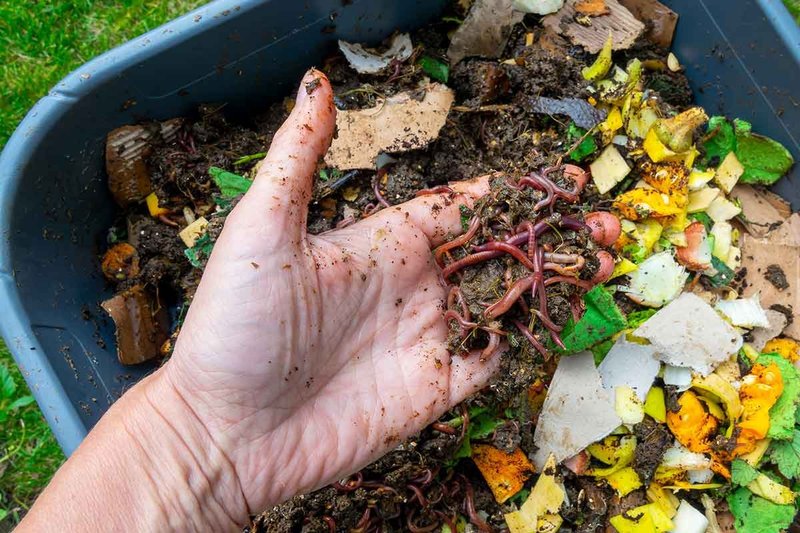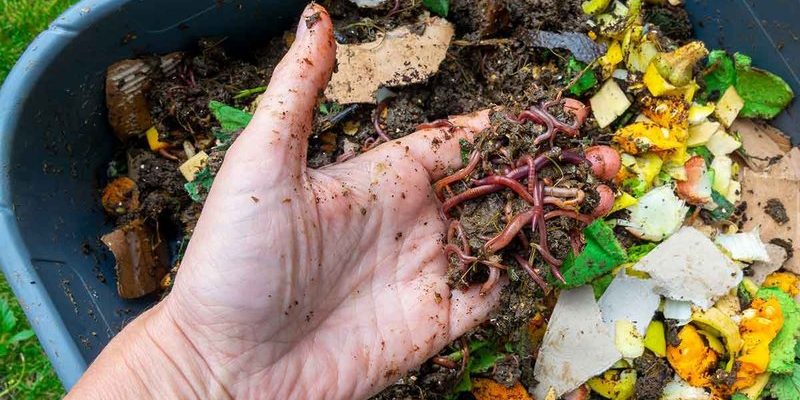
Now, you might be wondering, what exactly is a hammerhead worm? These flat, elongated creatures—often a little over a foot long—are known for their distinct, “hammerhead” appearance. They can be quite a nuisance in gardens, as they prey on beneficial earthworms. So, if you’re keen on composting but want to keep these creepy-crawlies at bay, you’re in the right place. Let’s dive into how to compost effectively without inviting hammerhead worms to your party.
Understanding Hammerhead Worms
Before we jump into the composting strategies, it’s essential to understand what hammerhead worms are and why they pose a problem. Hammerhead worms, or *Bipalium spp.*, are native to tropical regions but have made their way to many places worldwide, often hitching a ride in potted plants and soil. They thrive in moist environments like your compost pile, where they can feast on earthworms and other small invertebrates.
Here’s the thing: if you have a healthy compost setup, hammerhead worms might see it as an all-you-can-eat buffet. They reproduce quickly, and one of their main survival tactics is to invade rich organic matter. So, knowing what attracts them can help you avoid creating a worm haven in your compost.
Recognizing these worms is straightforward due to their unique shape and coloration, typically a mix of brown and green. If you spot one, it’s crucial to deal with it quickly before it establishes a presence in your compost pile. Like a bad dinner guest, you want to send them packing as soon as possible.
Choosing the Right Composting Method
When it comes to composting, the method you choose can significantly impact whether hammerhead worms show up. There are several composting techniques, each with its advantages and drawbacks.
1. **Hot Composting**: This method involves creating a compost pile that heats up to kill off unwanted pests and pathogens. To do this, you’ll need to ensure a proper mix of green (nitrogen-rich) and brown (carbon-rich) materials. This high temperature not only speeds up decomposition but can also help eliminate hammerhead worms before they have a chance to thrive.
2. **Cold Composting**: This is a slower process where you simply pile up organic waste and let it decompose over time. While this method is low-maintenance and straightforward, it doesn’t generate enough heat to deter hammerhead worms. If you want to avoid them, this might not be the best option for your composting approach.
3. **Vermicomposting**: Using worms, specifically red wigglers, can be a great way to compost, but be careful. While these beneficial worms help break down waste, they can be at risk if hammerhead worms invade. If you choose this method, keep a close eye to ensure the good worms aren’t outnumbered.
Choosing the right compost method can make a huge difference in keeping your compost free from unwanted guests.
What Materials to Avoid
You might think that anything organic is fair game for your compost, but that’s not always true. Certain materials can attract hammerhead worms or provide a hospitable environment for them to thrive.
– **Highly Moisture-Rich Foods**: Items like watermelon rinds or overly wet scraps can create a damp environment, which hammerhead worms love. Try to balance moisture levels in your compost by incorporating dry materials like shredded paper or straw.
– **Perennial Weeds**: If you’re composting garden waste, be cautious about including perennial weeds. Some can establish themselves in your compost and later invade your garden. It’s best to either compost these with caution or use a hot composting method to ensure they’re killed off.
– **Non-Native Plant Species**: Similar to perennial weeds, non-native plants can introduce hammerhead worms in their soil. Always source compost materials from local, healthy plants to minimize the risk.
So, when you’re pondering what goes into your pile, think about the potential consequences. It’s better to be selective than to have to deal with the aftermath of an invasion.
Maintaining Optimal Compost Conditions
To keep your compost healthy and deter hammerhead worms, regular maintenance is key. You want to create an environment where beneficial organisms thrive while keeping pests at bay.
– **Aeration**: Turning your compost pile regularly introduces oxygen into the mix. This helps speed up decomposition and keeps the conditions less favorable for hammerhead worms, who prefer stagnant, moist environments. Think of it as giving your compost a good breath of fresh air.
– **Temperature Monitoring**: Keeping track of your compost’s temperature is crucial. Ideally, you want your pile to reach between 130°F and 160°F. This not only helps decompose materials faster but also effectively kills off unwanted worms and pests, including hammerhead worms.
– **Moisture Control**: Aim for a moisture level that’s damp but not soggy. If your compost feels like a swamp, it might be a magnet for unwanted guests. You can add dry materials to soak up excess moisture or occasionally let the pile dry out.
By blending these practices, you’ll create a thriving compost pile that enriches your garden while sending hammerhead worms packing.
Regular Monitoring and Intervention
Even with the best preventive measures, it’s wise to keep an eye on your compost pile regularly. This way, you can catch any potential hammerhead worm issues before they spiral out of control.
– **Visual Inspection**: Make it a habit to check your compost weekly. Look for any signs of unwanted worms or unusual activity. If you see a hammerhead worm, remove it carefully and dispose of it in a way that ensures it won’t return (like getting rid of it far from your garden).
– **Adjusting Conditions**: If you do spot hammerhead worms or other pests, consider adjusting your compost conditions. Increase aeration, adjust moisture levels, or even heat up the pile if necessary. Addressing issues promptly can prevent a small problem from turning into a larger infestation.
– **Seek Professional Help**: If you’re continually facing issues with hammerhead worms or if your compost pile isn’t thriving despite your best efforts, consult with a local gardening expert or extension service. They can offer tailored advice based on your specific situation.
Remember, composting is a journey, and it’s all about learning and improving over time.
Composting can feel daunting, especially when worrying about uninvited guests like hammerhead worms. But with the right knowledge and techniques, you can create a fantastic compost pile that benefits your garden while keeping those pesky worms at bay.
So, get your hands dirty and start transforming your waste into something magical! By being mindful of what you add, how you maintain your pile, and keeping a watchful eye, you’ll be well on your way to composting success. Happy composting!

